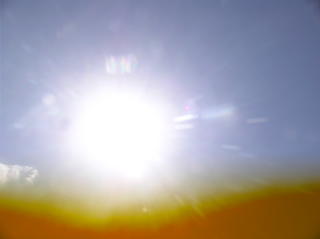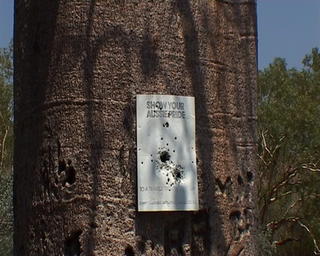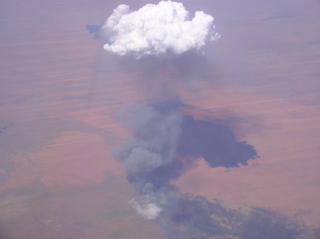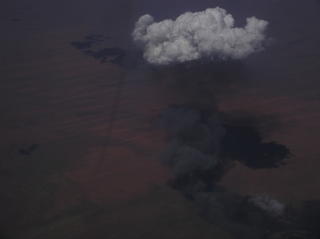 www.nga.gov.au/fullscreen/details/stelarc.cfm
www.nga.gov.au/fullscreen/details/stelarc.cfmStelarc's
"Prosthetic head is an embodied conversational agent that speaks to the person who interrogates it with real-time lip syncing and facial expressions."
ePerformance and plugins conference at UNSW
This was a well planned and thought provoking conference with some provocations, too many papers that were read (why do they do that at conferences?) and the clown act whch was the live broadcast of Johannes Birringer from Nottingham University. Apart from being underprepared Birringer had enabled the clown, camera operator, to turn the event into a farce zooming in and out, shaking the camera, twisting the camera and unwittingly commenting into the camera mic, the only mic broadcasting. This botched video conference was witnessed by the cut off audience in Sydney. Both Philip Auslander and Michael Rush delivered papers via video conferencing in an amazingly seemless and personal way where the technology was interactive. It actually worked. The technology succumbed to the ideas. The mode of delivery insisted upon by Birringer left him unaware of the monumentally bad show he constructed. Luckily for the UNSW organisers they have captured this painful experience in the archive of video conferencing for immortality. Maybe Birringer, who appears to have a good sense of humour from the way our British counterparts were laughing at what to us were inaudible jokes, should have a look when he comes to Australia in 2006.
Yuji Sone talked about Kata as the artist’s source on which to then draw inspiration in contrast to Auslanders examples of hammering a nail and musical fingerings as being examples of purely technical performance moments equally acomplished by machines as by performers. This is in opposition to the solidarity of human expression. Such binaries, I think, are not useful. What is interesting with Auslander's argument is trying to find a way to talk about technique.
Stelarc says there is no intelligence. I wonder if he differentiates technique and expression?
My thoughts about my work on instant reflection.
There is no way to integrate or cross discipline my research but perhaps I can collide or parallel viewpoints to arrive at something that while coherent is less concrete, more perplexing and challenging. In my thesis I want to use one small example from my film and write about it from different angles, not necessarily from differing disciplines. I’m thinking as an approach to try and discern technique, another to integrate a whole experience, another to focus on my position as the person filming, another to try and locate the person who was filmed and is now deceased. Is he now just sound and digitised video played back as a light source?
Death is it ... in that I would not like to make fun of the spiritual dimension in the way the Institute for the Study of Perpetual Emotion Ouiji Board Seance project approached their subject. To reduce things to networks that are scientifically observable falls short depending on a sole knowledge base used as the measuring stick.
-Yana’s suggestion to storyboard a not ethnographic film and to play on that.
- I’m thinking to use repetition, elongation, condensed moments, never ordinary speed, stills not as documents of truth but as a means to slow things down. Slow down say D&G in order to comprehend.
Argue against the death of spirit- ie. Warhol, Jamieson. That is for a society who are already dead.
The people with whom I am working are not at that point. Their ability to manifest the old people, their connections to country and all that is present through performance is very much alive.
DV and all media are tools not ends in themselves, as are all technologies.
Mastering new tools with their respective Kata’s must enable a generation of artists to produce ideas that go beyond this moment of blockage fixed on the “new” and surpass the “justifiable”.
At the end of this conference I am left feeling dissatisfied that we are still in artistic limbo with the combined effort of such a potentially powerful meeting, in a time of major structural change, not acknowledging the dissipation of practice into the ether of diminishing ARC and Australia Council grants. By engaging in this ‘liberal’ ethos we promote the downward spiral of creative potential. Is this the kind of emaciated life source we have to look forward to with artists forced into academic retreat as a means to prolonge practice? Friendly and supportive though the faces may be, is this the kind of environment required to lay the way for a fertile artsitic future or are we still eating up our past?















